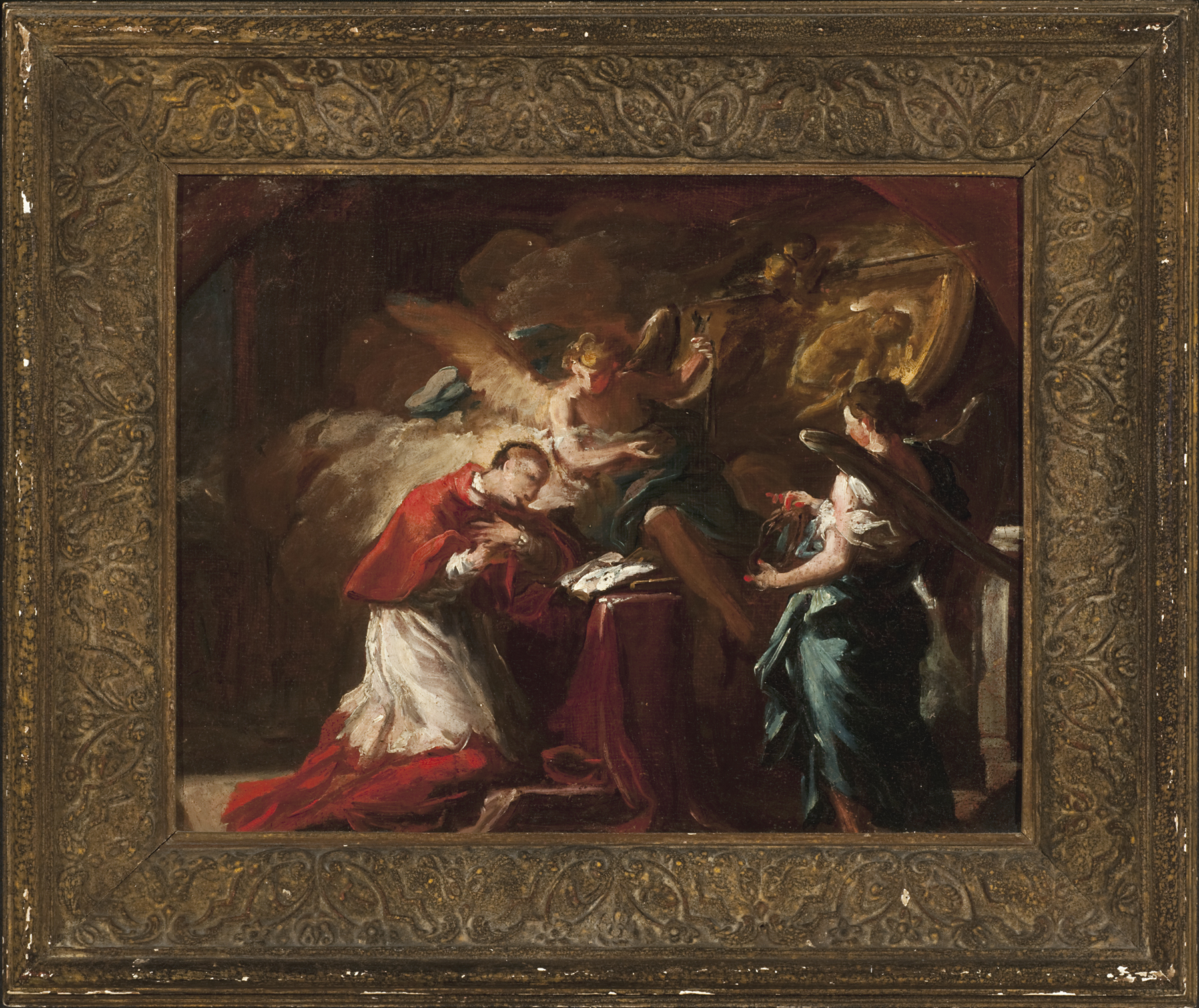Saint Charles Borromeo in Ecstasy, Agostino Santagostino
Artwork Overview
Agostino Santagostino, artist
circa 1635–1706
Saint Charles Borromeo in Ecstasy,
late 1600s
Where object was made: Italy
Material/technique: canvas; oil
Dimensions:
Canvas/Support (Height x Width x Depth): 30.5 x 38.1 cm
Canvas/Support (Height x Width x Depth): 12 x 15 in
Frame Dimensions (Height x Width x Depth): 17 1/2 x 20 7/8 x 2 1/2 in
Canvas/Support (Height x Width x Depth): 30.5 x 38.1 cm
Canvas/Support (Height x Width x Depth): 12 x 15 in
Frame Dimensions (Height x Width x Depth): 17 1/2 x 20 7/8 x 2 1/2 in
Credit line: Museum purchase
Accession number: 1950.0072
Not on display
If you wish to reproduce this image, please submit an image request


